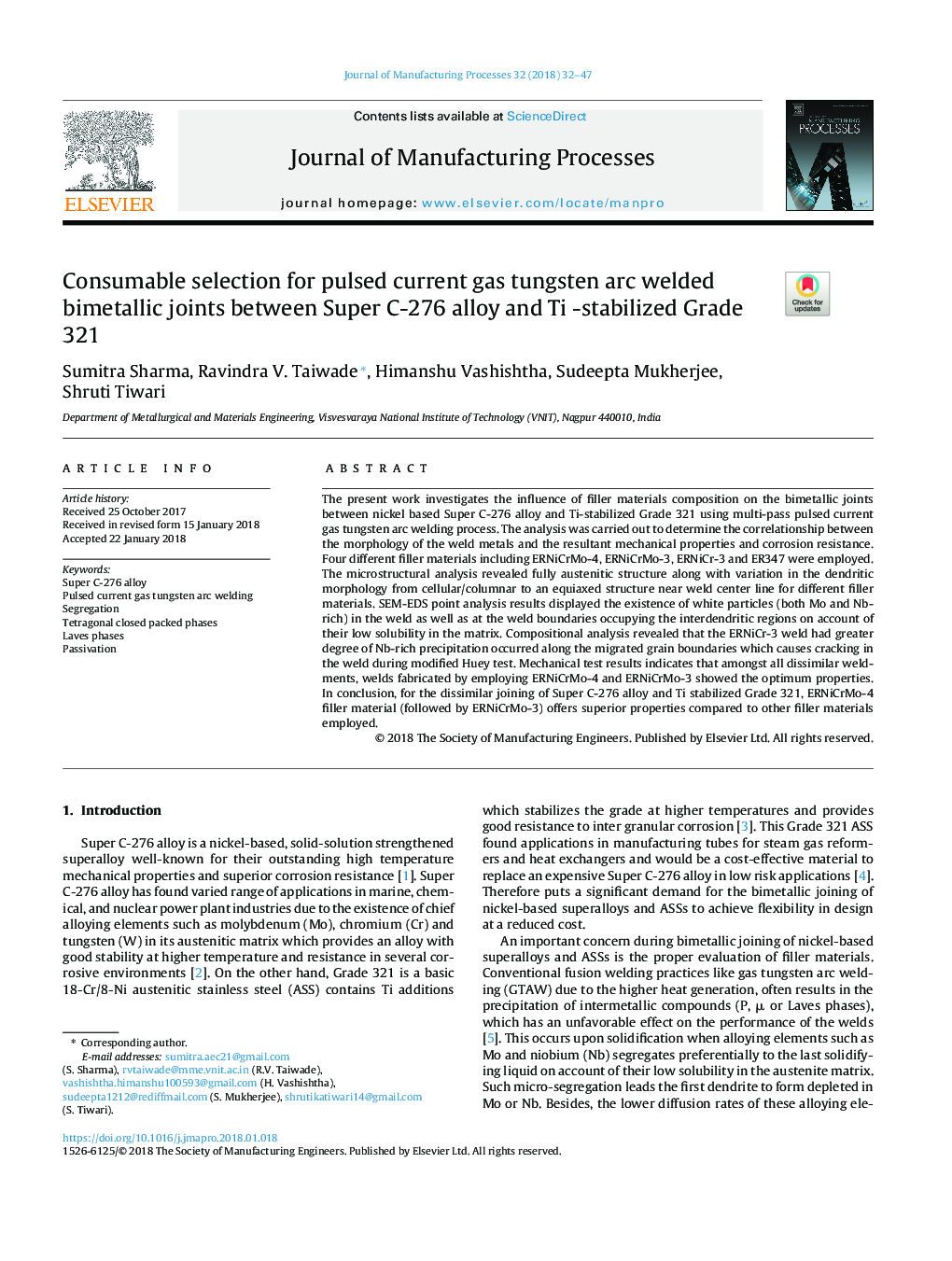| Article ID | Journal | Published Year | Pages | File Type |
|---|---|---|---|---|
| 8047917 | Journal of Manufacturing Processes | 2018 | 16 Pages |
Abstract
The present work investigates the influence of filler materials composition on the bimetallic joints between nickel based Super C-276 alloy and Ti-stabilized Grade 321 using multi-pass pulsed current gas tungsten arc welding process. The analysis was carried out to determine the correlationship between the morphology of the weld metals and the resultant mechanical properties and corrosion resistance. Four different filler materials including ERNiCrMo-4, ERNiCrMo-3, ERNiCr-3 and ER347 were employed. The microstructural analysis revealed fully austenitic structure along with variation in the dendritic morphology from cellular/columnar to an equiaxed structure near weld center line for different filler materials. SEM-EDS point analysis results displayed the existence of white particles (both Mo and Nb-rich) in the weld as well as at the weld boundaries occupying the interdendritic regions on account of their low solubility in the matrix. Compositional analysis revealed that the ERNiCr-3 weld had greater degree of Nb-rich precipitation occurred along the migrated grain boundaries which causes cracking in the weld during modified Huey test. Mechanical test results indicates that amongst all dissimilar weldments, welds fabricated by employing ERNiCrMo-4 and ERNiCrMo-3 showed the optimum properties. In conclusion, for the dissimilar joining of Super C-276 alloy and Ti stabilized Grade 321, ERNiCrMo-4 filler material (followed by ERNiCrMo-3) offers superior properties compared to other filler materials employed.
Related Topics
Physical Sciences and Engineering
Engineering
Industrial and Manufacturing Engineering
Authors
Sumitra Sharma, Ravindra V. Taiwade, Himanshu Vashishtha, Sudeepta Mukherjee, Shruti Tiwari,
